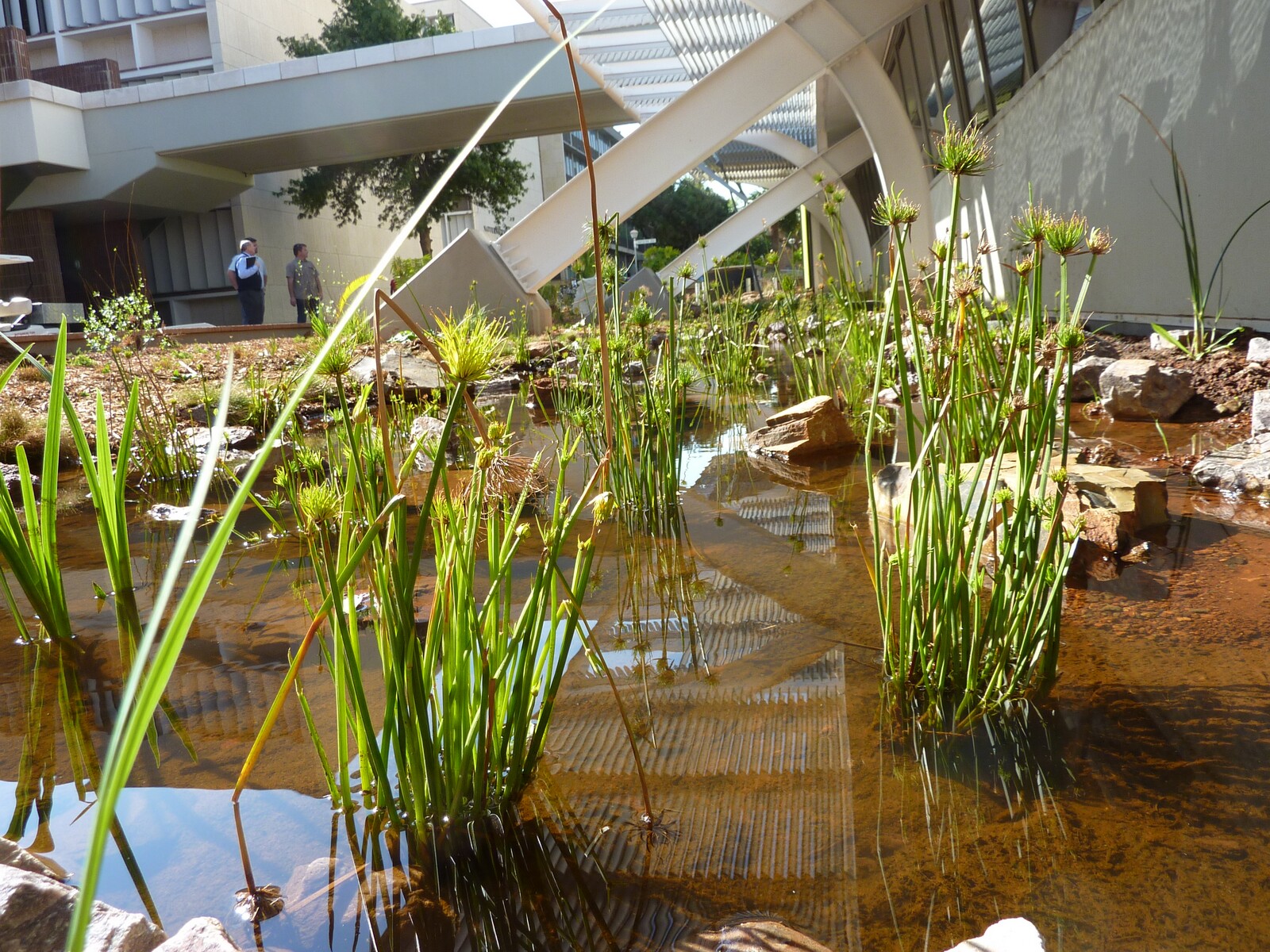Posted on December 05, 2013
This new development presented many design challenges, namely dealing with storm water off the new building (1 600 m2 roof) and surrounds, waterproofing of the existing lecture halls, merging of a barren and sterile landscape into the botanical garden. Another challenge was providing for the blind student fraternity that frequents the area.
To resolve these issues and use natural processes to the best advantage, a lined (to waterproof the structure) rain garden was constructed through which storm water is cleansed using bio-swales. The water flows into permanent ponds, which are home to numerous aquatic plants, fish and frogs. Seasonal tidal ponds surround the permanent ponds. Excess water from the structure will be collected in a 130 m3 underground tank, to feed into the Botanical Garden’s irrigation system.
The planting design and material, selected by the Curator of the Botanical Garden, Jason Sampson, will employ the theory of bioremediation and habitat creation for further research, whilst expanding the plant collections of the University. The tropical African cycad collection will also be housed in this extensively landscaped area, a fitting aesthetic feature for an important entrance to the Hatfield Campus.

The space was lined with lit seating walls to prevent cluttering of the newly paved walkways. The shapes of these walls are in keeping with the water theme and are beneficial to the sight impaired students as they move about. All the existing trees were retained in the design. In future, the garden will include artwork, developed in conjunction with the Department of Fine Arts.
Copyright © University of Pretoria 2025. All rights reserved.
Get Social With Us
Download the UP Mobile App